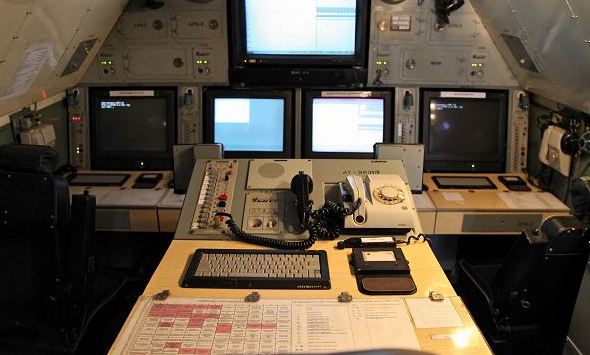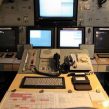
Moscow Launches Investigation into Failed Automated Command and Control System
Publication: Eurasia Daily Monitor Volume: 9 Issue: 221
By:

Since Moscow ordered the reform and modernization of its conventional Armed Forces in the fall of 2008, at the heart of what became an increasingly obscure transformation program was the improvement of command and control (C2). This resulted in simplifying C2 structures, particularly reducing the number of echelons through which orders are issued during combat operations. However, to facilitate the modernization and ultimately the speed of the C2 system, the Kremlin laid great emphasis upon automated C2, with ambitious plans to introduce a new and modern high-technology digitized system throughout the newly created brigade structures. Unfortunately, much like other aspects of the reform, these aspirations were more plausible on paper than in reality. Recently, after several attempts to resolve design issues, the Russian government ordered an inquiry to investigate the litany of defense industry failures.
Many of the Russian operational-strategic exercises since the ill-fated reform was launched placed the testing of the prototype C2 system at the center of the overall exercise themes; early experiments during Kavkaz 2009, Lodoga and Zapad 2009 yielded very limited progress. The Unified Tactical-Echelon Command and Control and Fire Control System (yedinaya avtomatizirovannaya sistema upravleniya takticheskim zvenom—YeSU TZ) initially produced some flickers on the screens of the officers advertising the promotion of future network-centric warfare capabilities, while officers with insufficient training in the use of the system struggled with the demands of high-technology assets. As the “refinements” continued and commanders “worked” with the defense industry, numerous design issues were encountered. Officers complained that the software was too complex; offering too many icons on the notebook screen through which to issue orders (RIA Novosti, January 18, 2010; Vremya Novostey, November 10, 2009).
The YeSU TZ was also tested during Vostok 2010 in Siberia and the Russian Far East, as well as in the Tsentr 2011 exercise, with no sign of a breakthrough. Continued tinkering on the system was carried out more discreetly in the 5th Motorized Rifle Brigade (MRB), Alabino, and Russian officers admitted off-the-record that testing the system raised concerns about its “stability” and, most importantly, its “survivability.” On the latter issue, the General Staff was concerned that the YeSU TZ may actually be vulnerable to enemy electronic warfare attacks. During actual combat operations, in other words, the automated C2 may go down (see EDM, November 25, 2011; Nezavisimoye Voyennoye Obozreniye, January 14, 2011).
The latest test for the YeSU TZ came in September during the Kavkaz 2012 exercises in the North Caucasus. The “digital” 5th MRB was tasked with checking the effectiveness of the system in a combat training situation. The Airborne Forces’ 247th Airborne Regiment served as the hypothetical opponent. According to command staff officers, the 5th MRB could not cope with the mission even under training conditions; the test was deemed to have failed. However, the system’s designers were left puzzling over the nature of the test, arguing that it was undermined by the presence of young conscripts in the brigade, who had only served in the army for one or two months; what chance did they have to master the basics of an automated C2 system? One employee of the defense industry company involved in designing the YeSU TZ commented that these soldiers had “no combat skills, let alone the skills of working on automated command and control equipment” (Nezavisimoye Voyennoye Obozreniye, November 19).
In October 2011, the former Chief of the Ground Troops, Main Staff Lieutenant-General Sergei Skokov, alleged that the General Staff was unable to competently assign tasks to the YeSU TZ designers (Nezavisimoye Voyennoye Obozreniye, October 14, 2011). But the problems did not lie exclusively within the General Staff and its failure to work closely with the designers of the system—another failing was located in the defense ministry. Russian officers explained that the former Deputy Defense Minister Dmitry Chushkin, who under Anatoly Serdyukov was to coordinate the work of introducing the YeSU TZ, had not taken the task seriously. Officers reported that Chushkin was “not knowledgeable” about the system, and it seems he cared little for its success or failure (Nezavisimoye Voyennoye Obozreniye, November 19).
Consequently, with the development of the YeSU TZ going the way of the trouble-prone Bulava submarine-launched ballistic missile, on November 1, Deputy Defense Minister Dmitry Rogozin ordered a commission to investigate the failures in order to determine why the introduction of the C2 system was so far behind schedule. Army-General (retired) Aleksandr Starovoytov, who established the Federal Government Communications and Information Agency under the President (FAPSI) in the 1990s, was appointed as the commission’s chairman. Starovoytov is the president of the Center for Information Technologies and Systems of Executive Authorities Federal State Scientific Establishment (Nezavisimoye Voyennoye Obozreniye, November 19).
As the new commission grapples with discovering culprits to blame, the actual task of resolving the existing design issues in the C2 system and reaching the point where these assets will be procured for the Armed Forces remains some ways off. That commission will also have to address the problem of multiple different automated C2 assets being used or experimented with in the Armed Forces; the airborne forces have a separate system to the one earmarked for the Ground Forces, while additional testing continues of entirely distinct systems for reconnaissance units (RIA Novosti, November 22). The task of future integration of these experimental systems may further complicate the process of modernizing C2.
A number of coordination and planning factors have combined to delay and indeed confuse the process of perfecting the automated C2; this has revolved around the General Staff tasking with the defense industry, the performance of the deputy defense minister responsible for overseeing the process and the inability of the defense industrial complex to efficiently meet the demands of modernizing the C2 system. As a result, the entire process became hostage to competing interest and incompetence, resulting in serial delays to achieving a final product. At even the theoretical level, therefore, Russia is struggling to design digitized C2 systems, let alone address the deeper practical issues of how to train military personnel to use them. Finally, it is important to note that no brigade in the Russian army yet possesses an automated C2 system, which means the improvements to C2 remain largely superficial.




